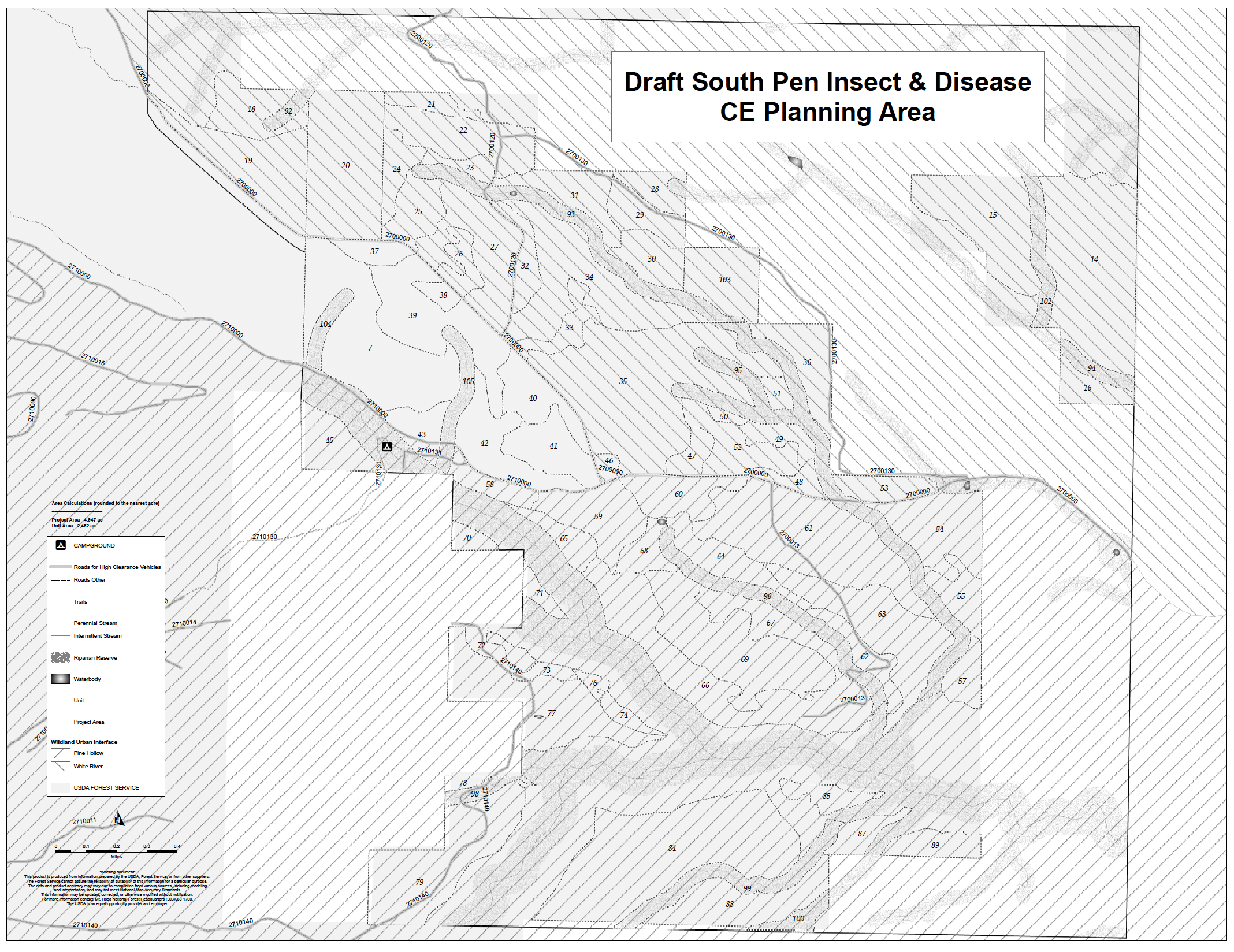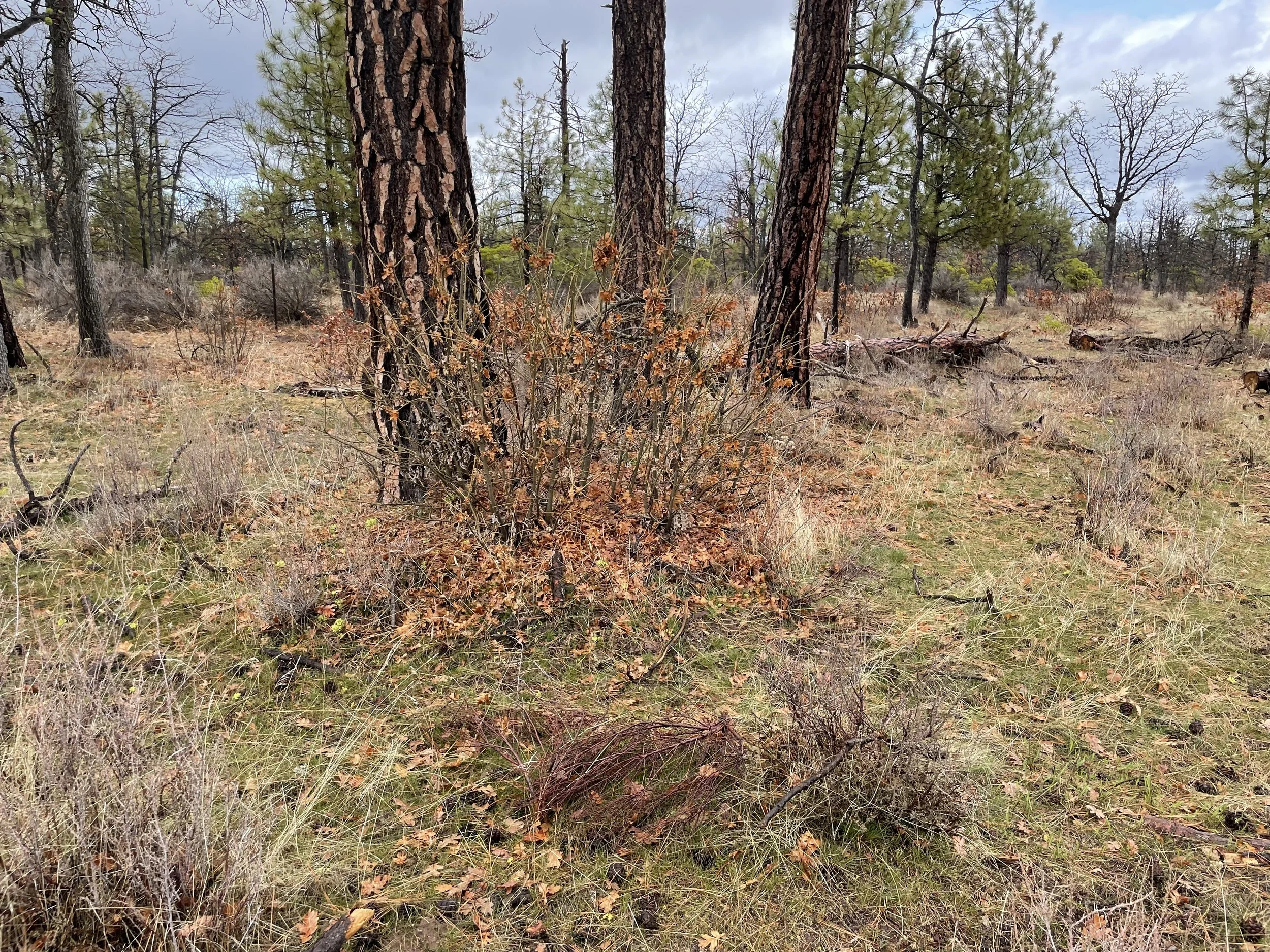South Pen Insect and Disease Project
The South Pen Insect and Disease Project aims to reduce tree density to relieve stress on overcrowded forests and improve tree health. By thinning stands, the project will lower the risk of insect outbreaks—particularly from beetles like the western pine, mountain pine, and pine engraver—that thrive in dense, drought-stressed conditions. These beetles target weakened trees, often working together to kill both large and small trees, leading to widespread forest mortality if left unmanaged. Over the years, fire suppression and limited forest management have allowed too many trees to grow too closely together, making the forest more vulnerable to pests, disease, and intense wildfires. The project focuses on restoring a more natural and resilient forest structure by prioritizing the retention of large, healthy trees—especially legacy ponderosa pine and Oregon white oak—and removing smaller, suppressed trees that compete for limited water and nutrients. This proactive approach is intended to mimic the effects of natural disturbances and foster a healthier, more fire-adapted forest ecosystem.
Map of treatments included in the South Pen Insect and Disease Project.
The South Pen Insect and Disease Project will thin small trees on about 2,430 acres to improve forest health and reduce the risk of insect outbreaks and wildfire. Crews will remove overcrowded, small trees—especially around old, fire-adapted species like ponderosa pine and Oregon white oak—using machines or hand tools, then either burn or collect the material, followed by low-intensity prescribed burns to mimic natural fire patterns and keep the forest resilient.
Treated stand on the east zone of Mt. Hood. The treatment retained ponderosa pine and Oregon white oak while maintaining snags and large down woody debris throughout the treatment unit.
This project is part of a larger, cross-boundary strategy to restore forest health, slow tree mortality, and prevent future outbreaks of insects and disease. The project was developed in partnership with the Wasco County Forest Collaborative and public comments.
To learn more about the South Pen Insect and Disease Project visit the Mt. Hood National Forest website here.



